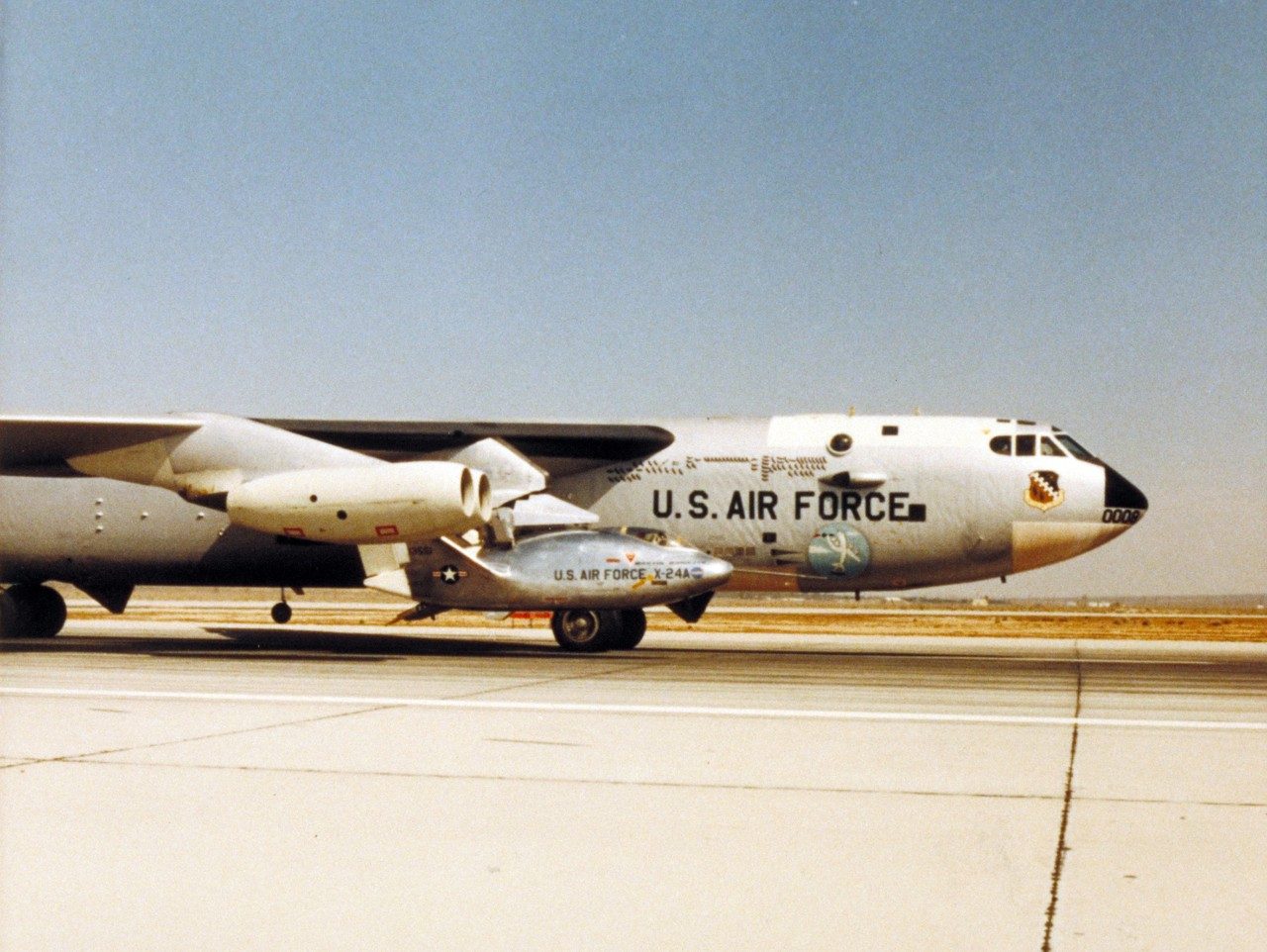From afar, it appeared as if the massive B-52 flying from Edwards Air Force Base on March 19, 1970, had shed a single silver tear into an endless expanse of piercing blue sky.
A closer looked revealed that it was a teardrop-shaped aircraft—without wings. It descended—as if in a state of free-fall—until its pilot, Jerauld Gentry, ignited a rocket engine, propelling the strange vehicle higher into the sky at speeds approaching Mach 1.
Gentry then allowed the aircraft to descend sharply, like a streaking hang glider, maneuvering it toward the ground, where he performed an unpowered landing on the expansive dry lakebed near the base.
Air Force and NASA officials breathed a sigh of relief. Gentry’s landing of Martin Marietta’s extraordinary X-24A “lift body” plane had proven what many scientists had thought impossible: that a wingless aircraft could descend from the upper atmosphere and glide safely back to Earth.
The grandfather of the modern space shuttle had been born.

Proving the Concept
Prior to 1957, the concept of a lifting body aircraft—a wingless vehicle that obtains lift from its aerodynamic shape—was thought to be pure science fiction.
But work by Dr. Alfred J. Eggers Jr. showed that by altering a symmetrical nose cone shape, it was more likely to survive reentry from space. Find the right wingless shape, the theory went, and a safe return from space to Earth might be possible.
In 1966, after conducting experiments to test the wingless concept, including towing prototypes from a hopped-up Pontiac convertible driving 120 mph, NASA and the U.S. Air Force turned to Martin Marietta.
The X-24A would soon emerge, its teardrop shape provided lift while the inclusion of three vertical fins allowed pilots to stabilize the vehicle during a rapid descent. With Gentry at the helm, the X-24A proved that an aircraft could indeed land unpowered after descending from the upper atmosphere.

The Delta Shape
But in order to ensure more precise landings, more stability was needed. In response, Martin engineers created a triangular shell to fit over the X-24A’s existing frame. What once looked like a nubby potato was now delta-shaped, flat on the bottom with a rounded top. The redesign doubled the X-24A’s lifting surface and improved its handling, allowing it to land on shorter surfaces.
On August 5, 1972, the X-24B made the first successful landing of a lifting body vehicle on a conventional airplane runway, writing the playbook for future Space Shuttle landings for decades to come.
The Teardrop Legacy
Lifting body vehicles, like the X-24A and X-24B, remained strong contenders for use by NASA in space until the invention of lightweight ceramic tiles by Lockheed Space Systems in the early 1970s. These tiles protected wings from the heat of reentry with minimum added weight. A tile-covered shuttle with wings and a rocket motor soon became more economical to build than lifting body vehicles, and the X-24 program’s viability drew to a close.
But the spirit of the X-24 lived on. When NASA began work on a prototype vehicle for transporting astronauts back to Earth from the International Space Station in the mid-1990s, it was the X-24A’s famous teardrop design that was chosen, a fitting tribute to a potato-shaped wonder that helped usher in a new era of manned space flight.
Sources and Additional Reading
- Gorn, Michael H. Expanding the Envelope: Flight Research at NACA and NASA. Lexington, Ky.: University Press of Kentucky, 2001.
- NASA. “Past Projects-Lifting Bodies.”http://www.nasa.gov/centers/dryden/history/pastprojects/Lifting/index.html, accessed August 2, 2012.
- Reed, R. Dale, and Darlene Lister. Wingless Flight: The Lifting Body Story. Lexington, Ky.: University Press of Kentucky, 2002.
- Skaarup, Harold A. Ohio Warbird Survivors 2003: A Handbook on Where to Find Them. iUniverse, 2003.




